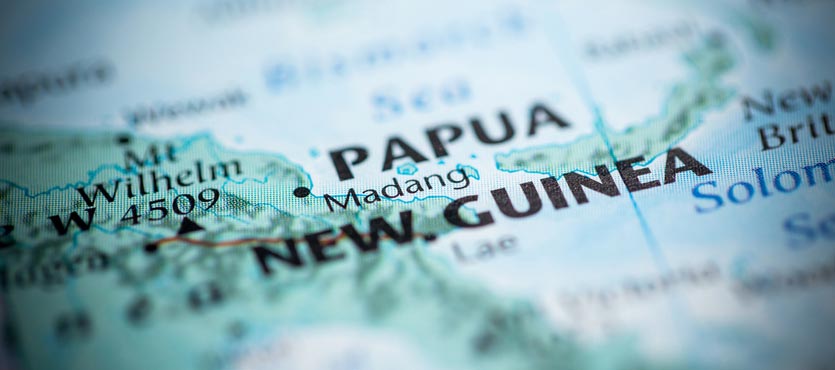Military contractors once again descended upon Papua New Guinea, a sight which, for many people, stirred unpleasant memories of a 1997 incident.
Ostensibly, the LAS contractors were on hand to help the Royal Papua New Guinea Constabulary prepare for next year’s Asia Pacific Economic Cooperation Summit. Connections run deep, as up to 10,000 visitors are expected at the November 2018 APEC event in Port Moresby, and LAS President Peter Halliman is a PNG native. Police Commissioner Gary Baki said that LAS was on hand to offer its services to train a rapid response team for the APEC summit, and that he had informed both the U.S. embassy and other PNG government agencies. Eventually, the RPNGC hopes to have 120 police and defense force servicemembers in the team.
Major General Jerry Singirok (ret.) expressed misgivings about the arrangement. “My big concern is that the presence of such people who are not identified with the police or defense force is suspicious and warrants an investigation into their presence,” he said.
Contractors in Papua New Guinea Then
The general was referring to contractor involvement in the 10-year Bougainville Civil War, which began in 1988. The roots of the conflict go back to 1960, when the discovery of copper caused considerable upheaval on this sleepy and isolated island inhabited mostly by fishermen. The conflict was the largest one in Oceania since 1945, killing as many as 20,000 people. Since the mine accounted for nearly half of PNG’s exports, it attracted many foreign workers, whom many Bougainvilleans deeply resented. Additionally, the natives were concerned about possible environmental damage to their island and did not like the fact that nearly all the profits went elsewhere.
To quell the growing unrest, Papua New Guinea Defence Force troops arrived in late 1988, a move that prompted some Bougainvilleans to form the Bougainville Revolutionary Army, a force dedicated to a separatist insurgency. PNGDF troops mostly withdrew and blockaded the island, conducting sporadic raids into BRA-held territory. Meanwhile, internal dissension plagued the BRA and the interim government under self-appointed President Francis Ona.
After a major anti-insurgency operation largely failed in 1994, incoming PNG Prime Minister Sir Julius Chan announced plans to negotiate an end to the conflict. In 1997, frustrated by a lack of progress, Mr. Chan and hired paramilitary operatives from Sandline to bolster PNGDF forces, beginning the so-called Sandline Affair. The plan drew widespread opposition, and the contractors were detained at the airport. Under intense pressure from neighboring Australia, Mr. Chan resigned and the Sandline contractors left Papua New Guinea under a cloud.
In a 2016 book, Mr. Chan insisted that bringing in the contractors was necessary “to get some engagement of some people that were experienced,” and that the Australians ruined the plan because they did not want to see “foreign influences in Papua New Guinea other than themselves.” Bougainville is now a semi-autonomous region in PNG, and an independence vote is scheduled for 2019.
Contractors in Papua New Guinea Today
Due to the close relations between the United States and Papua New Guinea, PNG probably qualifies as a friendly foreign government. Therefore, if U.S.-based contractors are injured in the country while supporting the government’s mission to provide security for the upcoming summit, these contractors are arguably eligible for compensation under a World War II-era federal law.
The Defense Base Act pays medical bills for contractors who are injured while serving overseas, whether they serve alongside U.S. military servicemembers, assist in rebuilding and reconstruction efforts, or otherwise support the American mission in that region.
To give recovering victims an income stream during rehabilitation, the Defense Base Act pays two-thirds of the injured victim’s average weekly wage, up to a maximum depending on when the injury occurred. The award is usually retroactive to the date of injury. The AWW calculation often involves more than looking at a recent paystub. Victims usually receive credit for both cash and non-cash compensation; moreover, in many cases, an attorney presents a reasonable estimate of what the victim’s AWW calculation should be.
Contact us to learn more about DBA procedure.

